The Whole Story with Anderson Cooper , is a collection of unique and immersive single subject episodes from CNN’s Emmy® and Peabody Award-winning. Every week they showcase character-driven stories, special interviews, profiles, and investigative deep dives featuring reporting from CNN’s anchors and
correspondents.
Since human activity has released a monster made of more than one trillion tons of carbon into the Earth’s atmosphere, innovators and investors are joining the global race against time to defeat it. In the last two-years, record shattering heatwaves have fueled wildfires in North America, Germany and Belgium have seen their worst flooding in decades, and China saw a year’s rainfall in one day. The world’s top scientists are calling for the use of ‘carbon capture’, but the technology needed cannot be developed overnight. They are also considering something once considered taboo: solar geo engineering. Scientists may be able to intervene to solve the climate crisis, but at what cost?
last week an excerpt of "The Whole Story with Anderson Cooper" was released by FIRST Global as they were Featured in CNN's. In this segment, the spotlight was on the 2022 FIRST Global Challenge in Geneva, Switzerland, and teams' participation in the New Technology Experience. Relive the memories of the 2022 games and witness the genius of young minds from Teams Zimbabwe, Greece, Indonesia, and others, as they share how they are tackling real-world challenges and shaping a sustainable future through robotics innovation.
The New Technology Experience, like the Robotics Challenge, is a fundamental component of FIRST Global’s annual program. It was established as a means for the student community to stay current with cutting edge technology. The robotics competition is themed around solving the world’s greatest challenges. The New Technology Experience is integrated with and highlights new technologies related to this theme. It provides students with the opportunity to become experts in emerging fields, establishes stronger network connections among FIRST Global teams, and improves the participants’ competitiveness for college, internships, and employment.
The New Technology Experience was first introduced in 2021 with the CubeSat Prototype Challenge. Teams were provided with educational resources and a physical kit of parts, including microcontrollers and environmental sensors, to fulfil a mission of local importance. Teams designed, built, programmed, and launched their prototypes into the lower layers of Earth’s atmosphere.
The theme of the 2022 FIRST Global Challenge is Carbon Capture, but that only explores one aspect of the growing carbon problem. The purpose of the New Technology Experience: Carbon Countermeasures is to guide teams in learning about climate change, the impact of carbon dioxide (CO2) on our environment, and the technologies being developed and already in place to ensure the safety of our planet through the future.
FIRST Global’s 2022 New Technology Experience is presented in partnership with XPRIZE, a trusted, proven platform for impact that leverages the power of competition to catalyse innovation and accelerate a more hopeful future. In 2021, XPRIZE announced the winners of its NRG COSIA Carbon XPRIZE, to develop breakthrough technologies to convert CO2 emissions into usable products. XPRIZE’s current competition, XPRIZE Carbon Removal, is aimed at fighting climate change and rebalancing Earth’s carbon cycle. In Carbon Countermeasures—an XPRIZE-inspired challenge—FIRST Global teams will research and develop their own solutions to combat climate change.
One Teams will select one of six sectors identified by the United Nations Intergovernmental Panel on Climate Change that have the potential to reduce emissions and combat global warming and climate change, which are listed here:
-
Energy
-
Agriculture, Forestry, and Other Land Use
-
Urban Systems and Other Settlements
-
Buildings
-
Transport
-
Industry
One Teams will select one of six sectors identified by the United Nations Intergovernmental Panel on Climate Change that have the potential to reduce emissions and combat global warming and climate change, which are listed here:
Finalists received recognition and the first, second, and third place teams received the XPRIZE Innovator Award. Recognition and awards were presented to teams at the Geneva event.
Submissions were reviewed by a panel of XPRIZE subject matter experts and thought leaders. This is a unique opportunity for teams to share their climate concerns, including what they are witnessing in their communities and countries, with leading technology experts and decision makers. It is also an occasion to impress this community with your team’s creativity, insight, and genuine desire to change the world for the better.
Team Indonesia share its climate concerns and then proposed a research and investigation on Vegetative Propagation Of Dryobalanops Aromatica/Sumatran Camphor Tree Through Stem Cutting and Tissue Culture Cloning for Forestation of Sumatra and Kalimantan. Fostering Carbon Emissions Reduction, Conserving Endangered Species Trees, Building Long-Term Local Economy and Improving Socioeconomic Development and Livelihoods for Indonesians.
All the initial research work and activities were carried out at Tissue Culture Lab at TechnoNatura. Where Stem cutting and cloning in tissue culture were investigated.
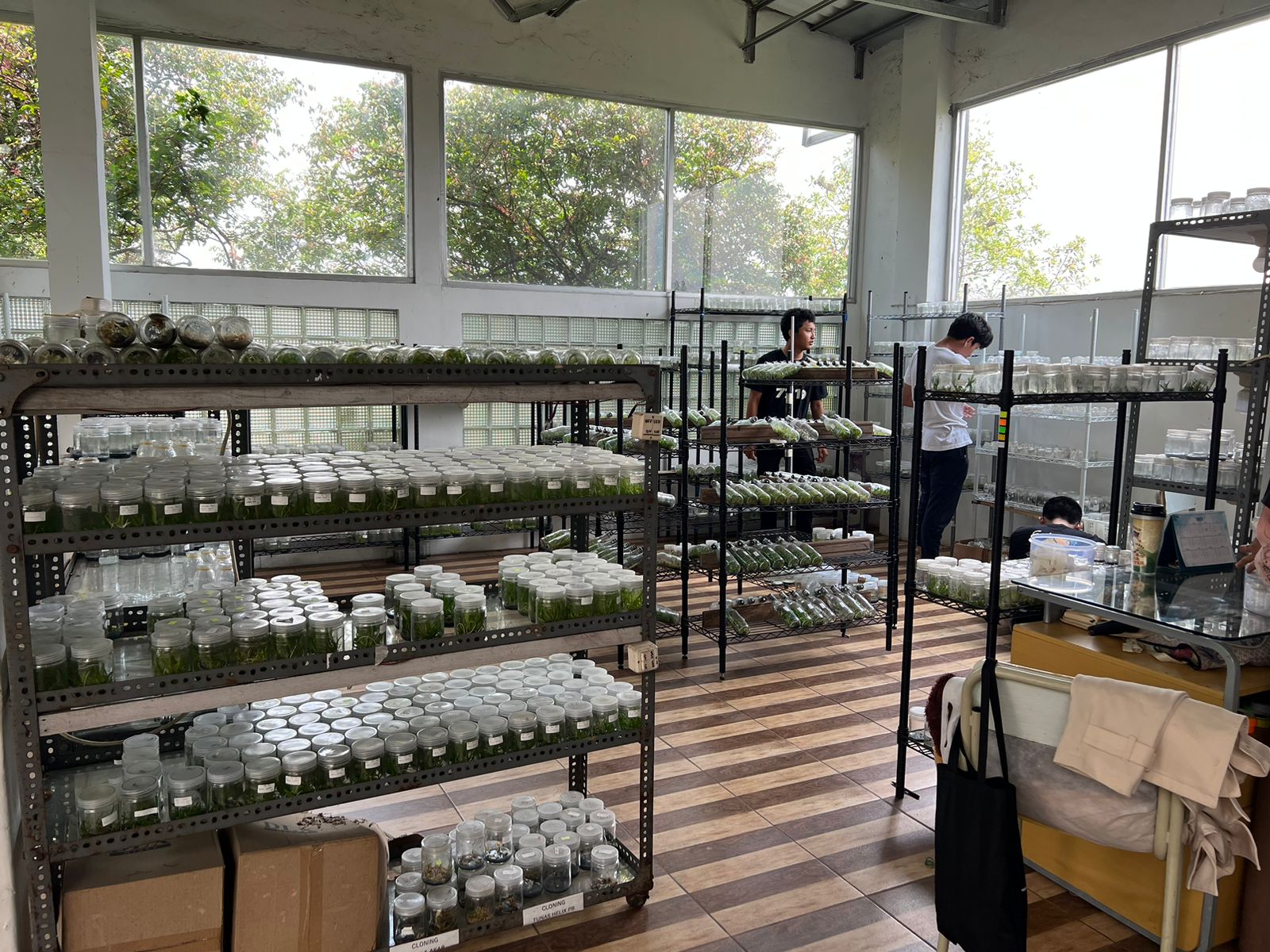
Indonesian proposal managed to get to the final and was presented in the front of Grand Juries in Geneva, and eventually was awarded silver medal of XPRIZE, Innovator Award, New Technology Experience: Carbon Countermeasures. FGC, GENEVA, SWITZERLAND, 2022
Here is our detail of proposal.
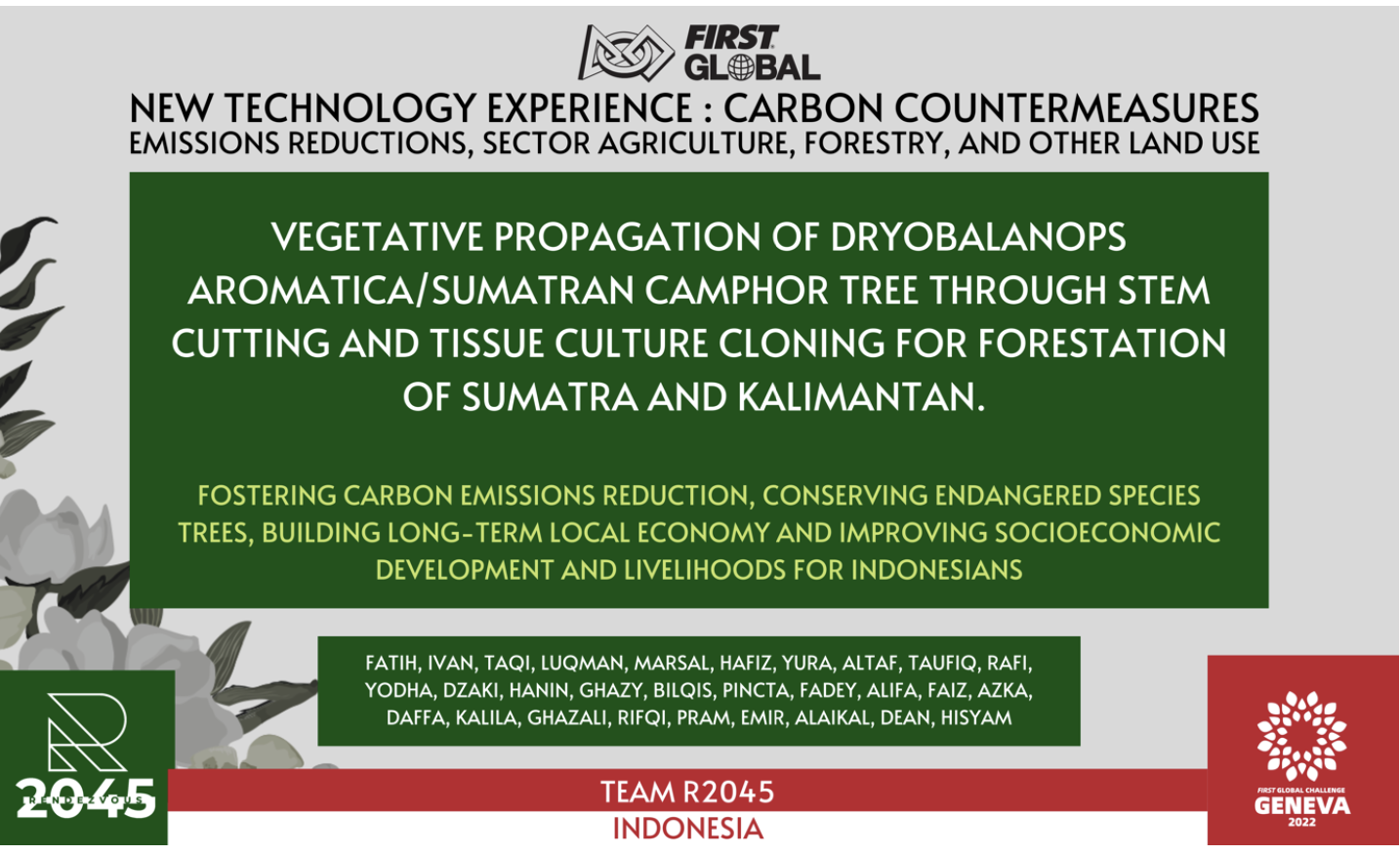
As It is necessary for Indonesia to produce a large quantity of planting material for the reforestation program. The objectives of this study are to find out whether this species could be propagated through stem cutting in an incubator as well as stem cutting in aseptic tissue culture media and then also attempting the cloning development of the in vitro regeneration protocol for use in mass propagation of this species.
Problem Exploration : Emission Reduction, Sector Agriculture, Forestry, and Other Land Use
- Indonesia, is the world’s third greatest emitter of greenhouse gasses. The main contributor to Indonesia’s high release of greenhouse gasses is mainly due to forestry. It accounts for approximately 2,563 million tons (mt) of CO2-equivalent greenhouse gasses (CO2). Within this sector, the largest carbon dioxide emissions arise from deforestation and land conversion, with the sum of 75%.
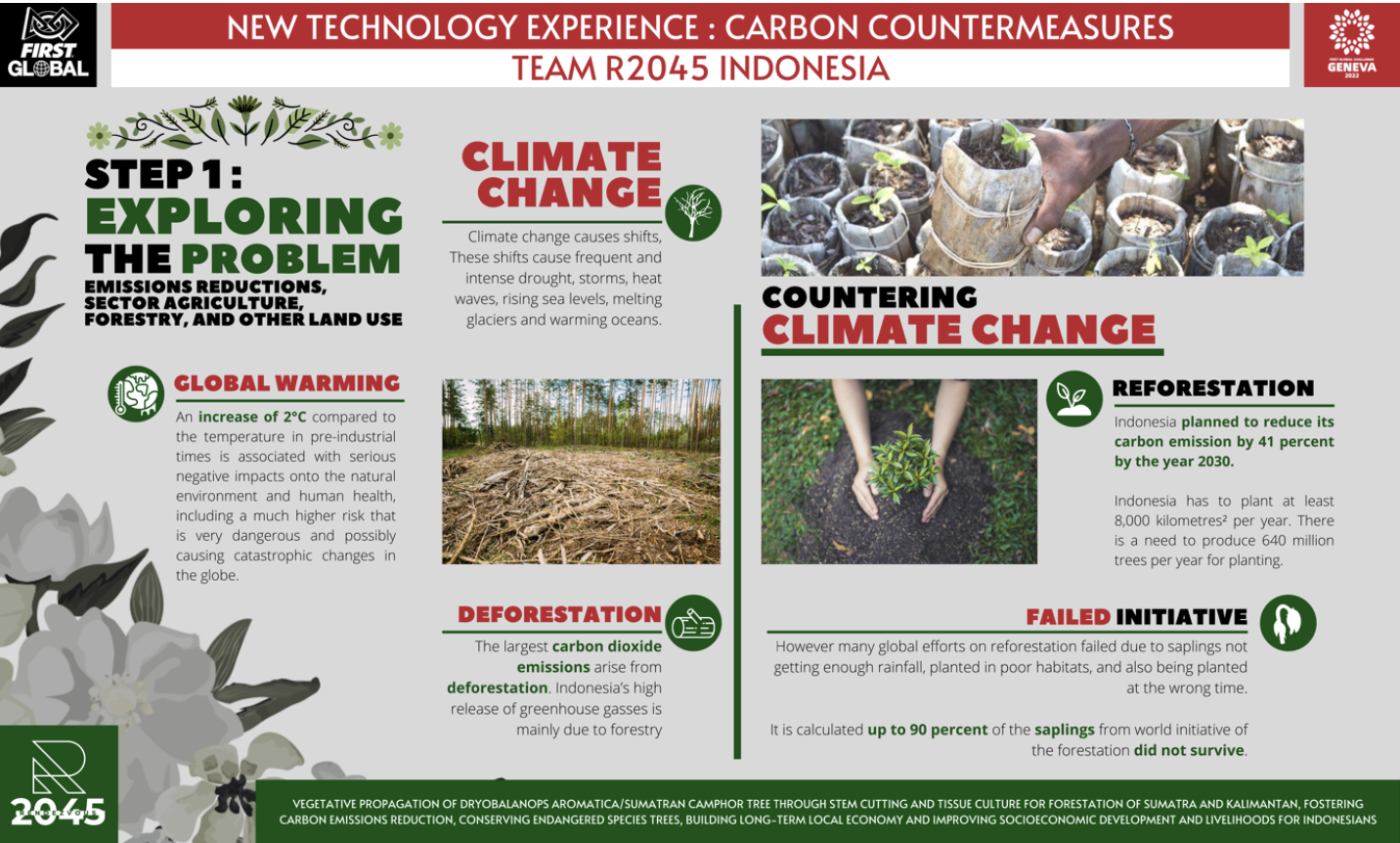
- Indonesia foresees reaching the peak of national GHGs emissions in 2030 with net sink in Forestry and Other Land Uses (FOLU), and with further exploring opportunities to rapidly progress towards net-zero emission in 2060 or sooner. To achieve a 41% reduction in carbon emissions by 2030, Reforestation is a major key tool for the Indonesian government in achieving a sustainable future. This commitment is included in the Golden Indonesia 2045 Program. With an average annual decline in emissions of 30.7 million ton CO2.
- The pace of reforestation needs to be much greater to hit Indonesia’s carbon emissions reduction target by 2030. To be safe in terms of climate change, Indonesia has to plant at least 800,000± Ha per year. Based on the planting density of 800 trees per Ha, Indonesia needs to produce about 640 million trees per year for planting stock. Assuming that each year, the trees remove an average of 25 tons of CO2 per Ha. Hence every year there will be an addition of 20 million tons of CO2 annual decline. However, unfortunately many large tree-planting initiatives failed, after three months later, up to 90 percent of the saplings were dead. The reasons were the trees were planted at the wrong time, there wasn’t enough rainfall and the quality of the habitats were poor.
Main Factors for Successful Reforestation
Main success factors of restoring ecosystems is picking the right plants for reforestation, the ones that are natives and proven to have long grown in certain areas, and the right occasion to perform the reforestation activity as well as supporting indigenous and rural communities. The suitable trees for reforestation are the one that provide useful products that can support the locals, such as fruit for consumption and wood for construction. An economic revenue from selling seedlings or its resin. One candidate of suitable trees to be used for reforestation in Kalimantan and Sumatra is the Sumatran Camphor.
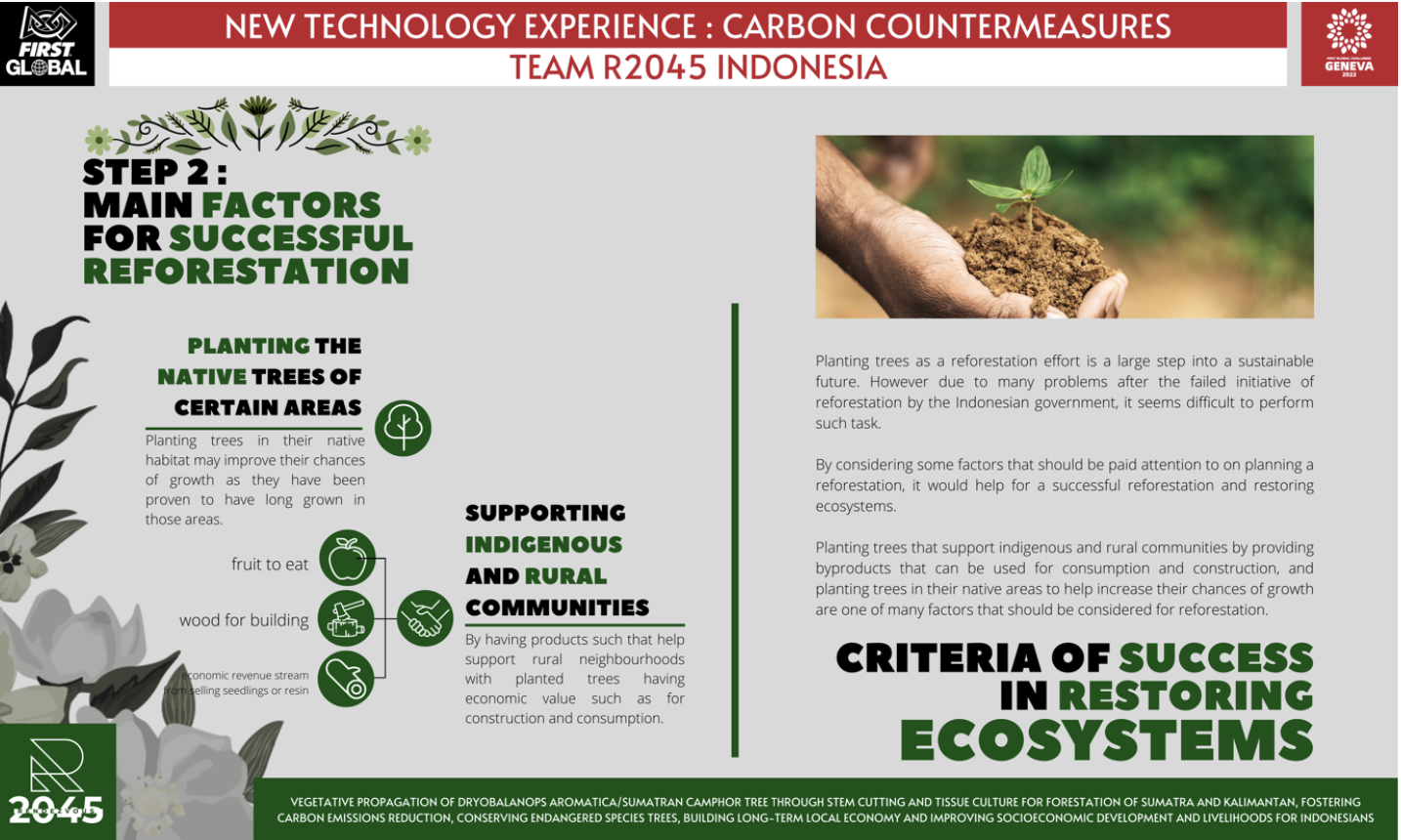
The islands of Sumatra and Kalimantan are used to be the main habitats for camphor trees in Indonesia. Dryobalanops aromatica have grown in natural forests in Sumatra and Borneo since the 7th century and have become an international trade icon at that period. It is one of history’s endemic trees, and was once an important timber trade species in Indonesia. The camphor wood trade, combined with Keruing reached an export value up to 100 million USD in 1989.
Camphor wood is also known as one of the woods that has high resistance to termites. This makes the furniture and building materials of the house more durable. Camphor tree also possesses oil or crystals that contain Borneol, which have been used for production of fragrances and is also used in various medicines for its antiseptic, anti-inflammatory, and analgesic properties. Its resin is collected and harvested by the local people.
Currently, the global essential oil market reached a volume of 177 thousand metric tons in 2019 and is expected to grow by around 8% in 2020-2025. The advancement in pharmaceutical industry has contributed to the Borneol industry growth in recent years. The potential for high economic value of the camphor tree- D. aromatica results in a large number of exploitation and illegal logging occurring, Its existence is increasingly threatened leading to the urgent need of conservation actions in the field. IUCN has granted Vulnerable A2cd status to D. aromatica since 2018. Therefore, in-situ and ex-situ conservation efforts need to be made to maintain the existence of the species.
However, planting stocks production is still problematic due to irregular flowering and fruiting. Since fruiting of D. aromatica is irregular, it is necessary to produce a large quantity of planting material for the reforestation programme.
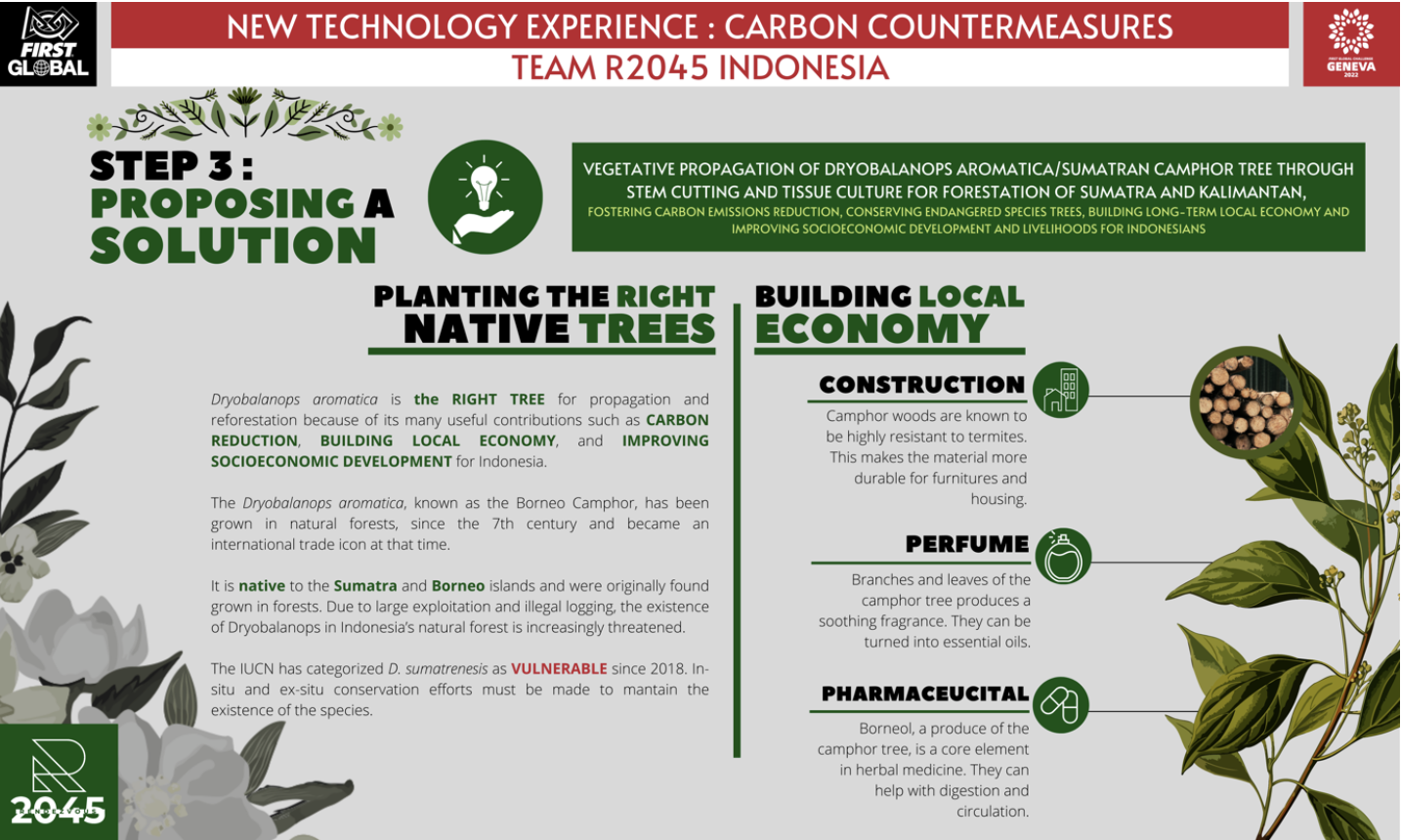
Current Status of Research Investigation
The proposed program was initiated to develop methods for vegetative propagation of this species, by conventional as well as biotechnological approaches. The program started in early February 2021, when the school gracefully received 2 Dryobalanops aromatica trees from the Department of Silviculture, Faculty of Forestry, Bogor Agricultural University (IPB). Two weeks later, in February 21st, 2021, an experiment of propagation by stem cutting was commenced, the media used were sand and rice husk media, aiming to evaluate the survival rate, rooting and shoot sprouting abilities of D. aromatica.
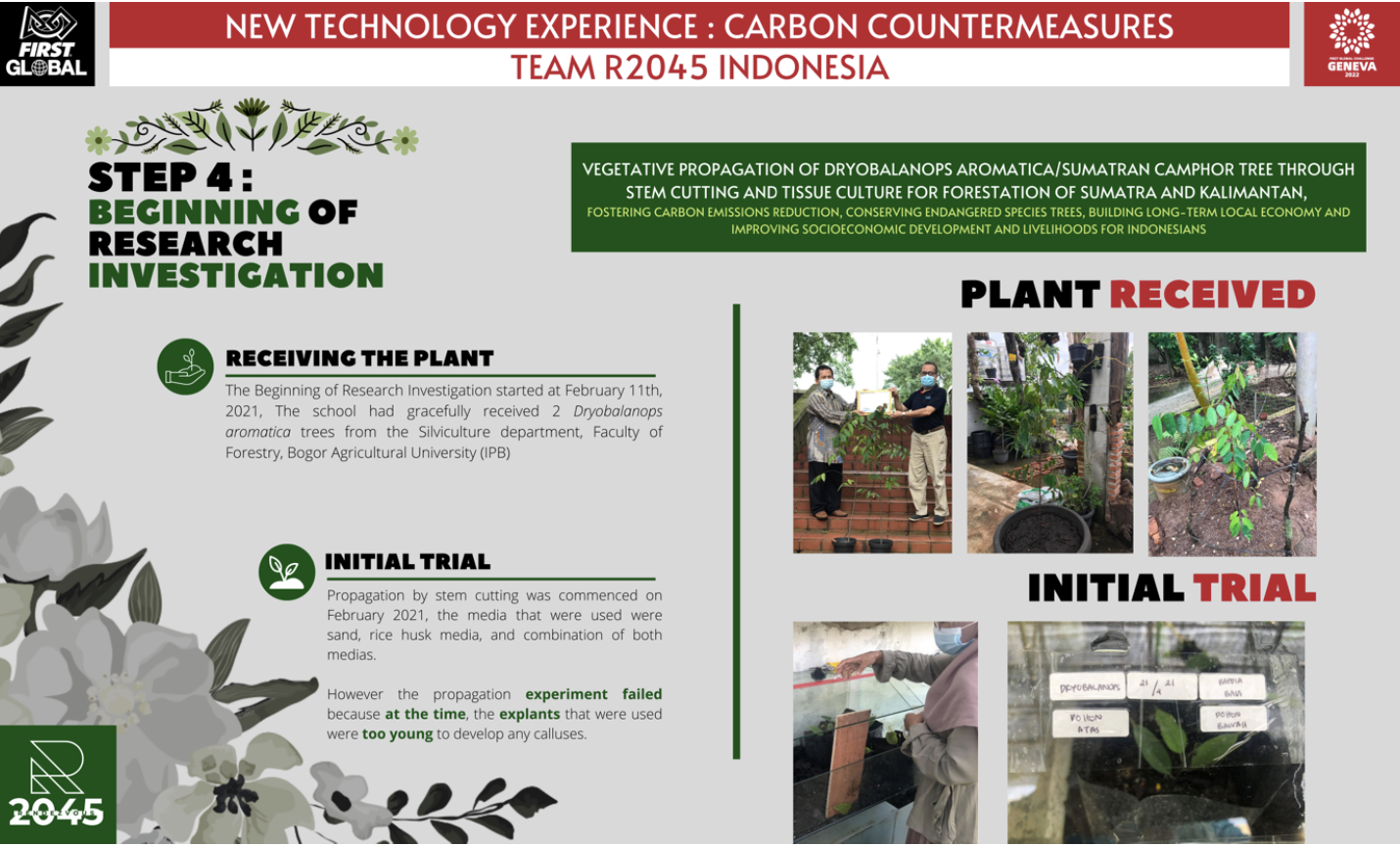
However the study was not successful, as the stems were still too young. A year later one of the trees has grown to 3,2 meters tall and it is assumed that it would be appropriate to do perform a second propagation by stem cutting experiment. Using 4 types of media and 3 types of hormones, the survival rate, rooting and shoot sprouting abilities of D. aromatica are once again observed.
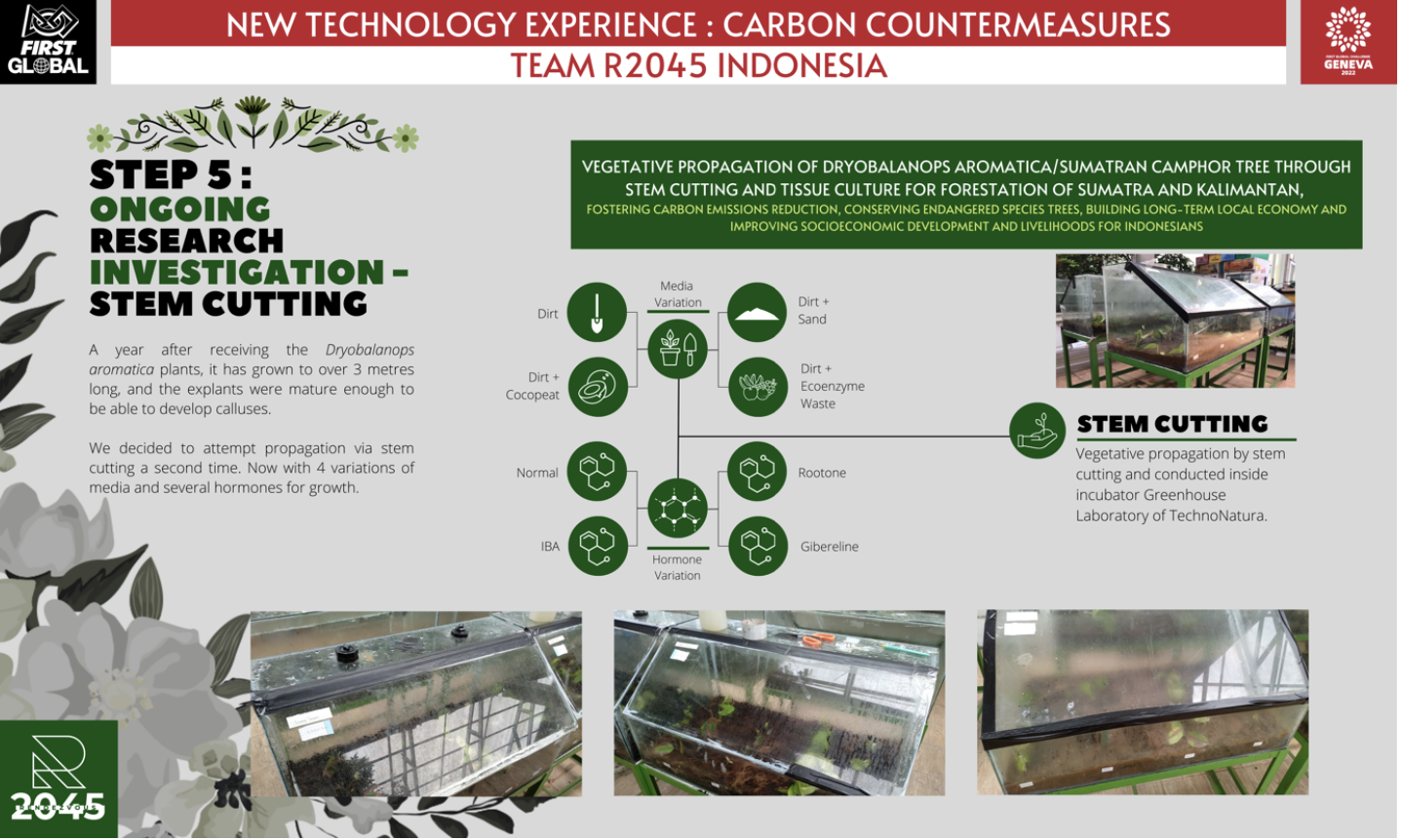
The process has been quite promising as some of the stems have grown roots and it is an ongoing process. This study has been investigated by several universities in Indonesia, they show promising result of stem cutting for vegetative propagation with a small number of plants output.
After successful attempt on the first approach, Second approach is using vegetative propagation by stem cutting conducted inside aseptic tissue culture media at the Plant Tissue Culture Laboratory of TechnoNatura. No reported work had this kind of approach before.
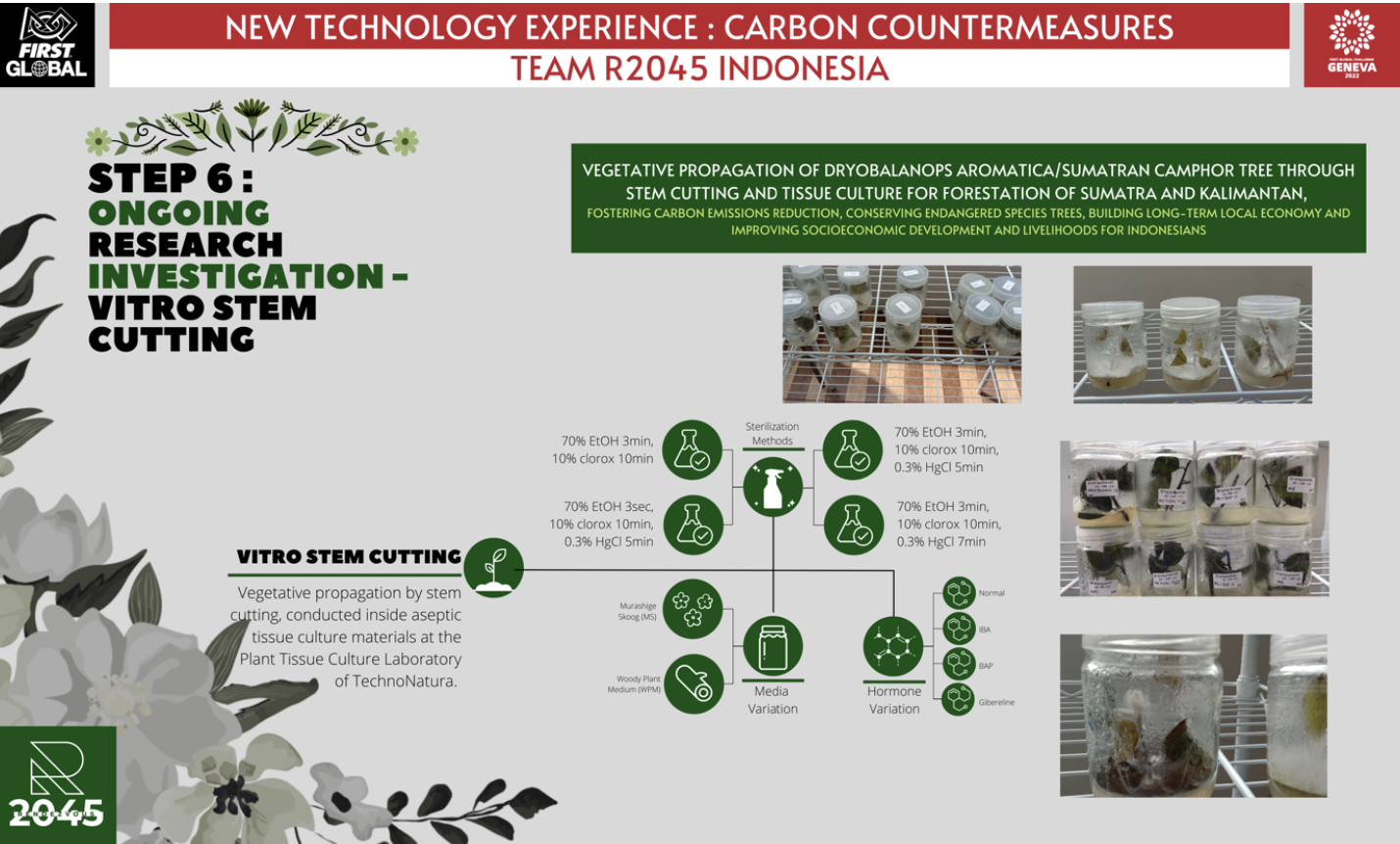
The same plant species of D. aromatica was used as cutting materials. Two different tissue culture materials; Woody Plant Media (WPM) and Murashige Skoog (MS) were used in this study, 4 kinds of hormones were used. B1/Thiamin, Gibberellin, BAP, Rootone. For surface sterilization, several methods of sterilization were performed. Results from the study were not successful, as most of the samples end up being contaminated and is browning. It is still undergoing experimentation. Further observation is required to support the complete data.
The third approach is cloning Dryobalanops aromatica by means of tissue culture. There has been no publication founded for this kind of work. Though more difficult as compared to conventional propagation, cloning by means of tissue culture has many advantages.
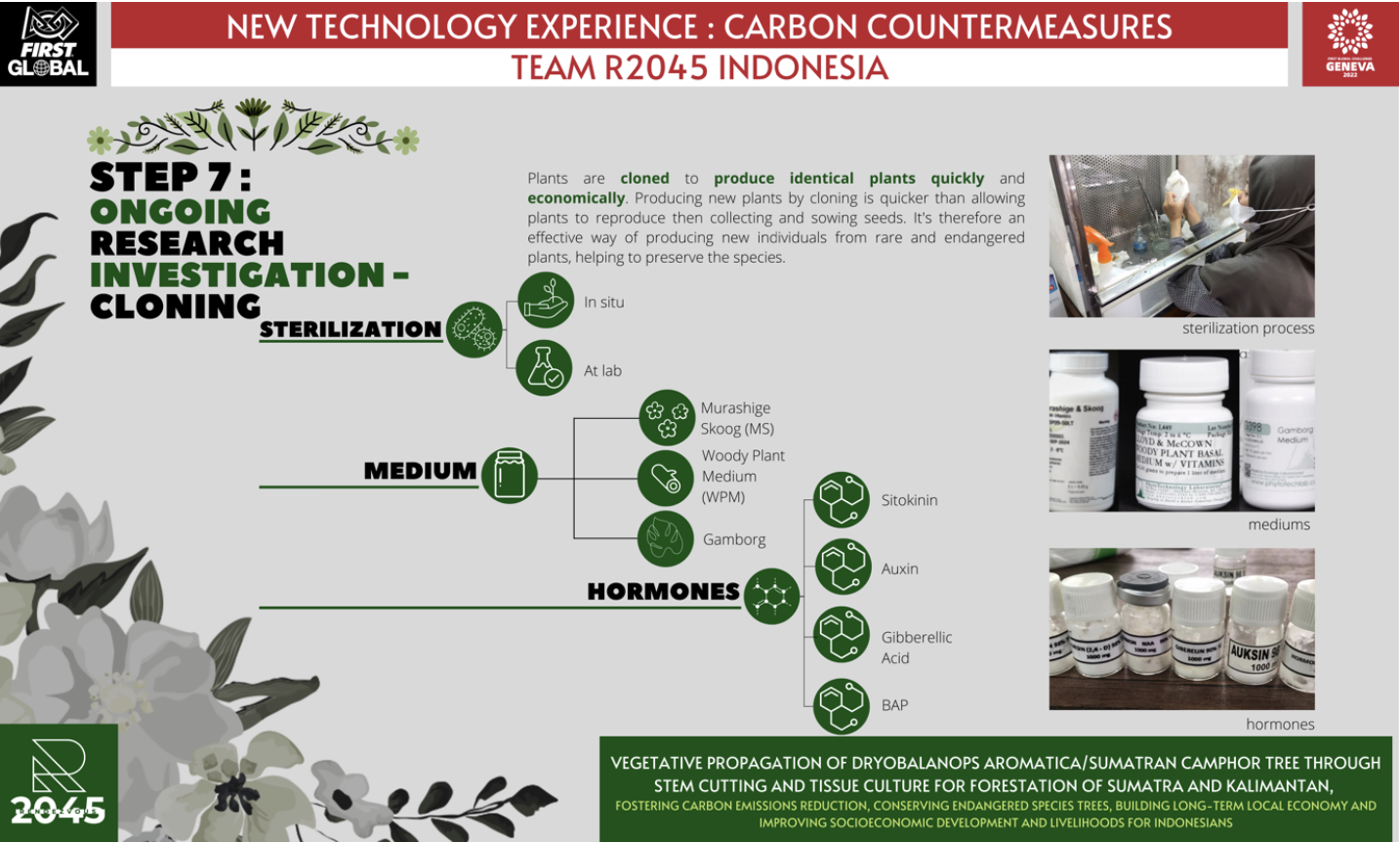
One is for producing large quantities of planting material for the reforestation program and second is the rapid multiplication of selected clones in the tree improvement program. Tissue culture technique is the most obvious choice of method. Producing new plants by cloning is quicker than allowing plants to reproduce then collecting and sowing seeds. It is therefore an effective way of producing new specimens from rare and endangered plants, to aid in preservation of the species.
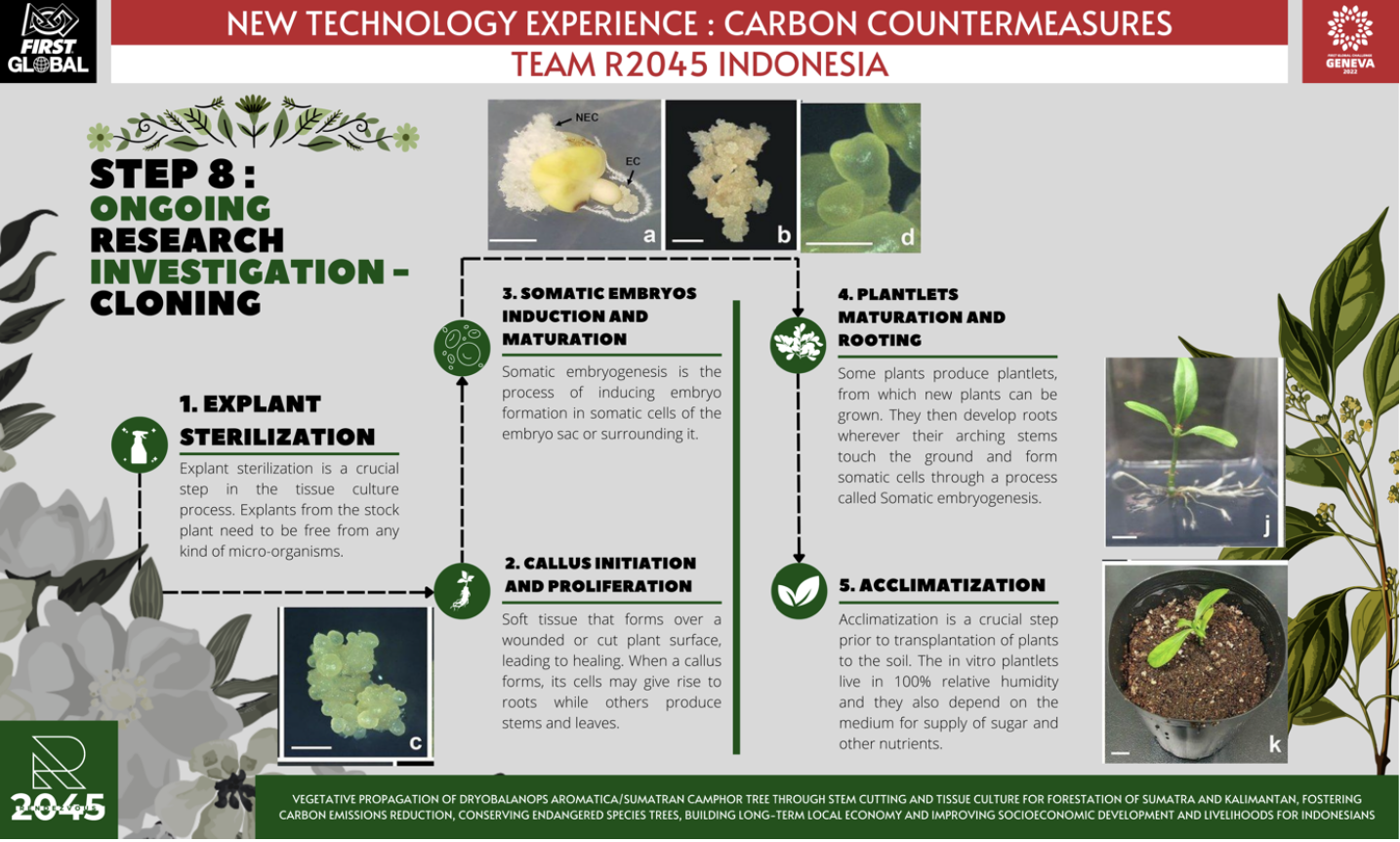
Cloning Dryobalanops aromatica is done by using three different tissue culture materials; WPM, MS and Gamborg. Several types of cytokinin, auxin and its hormone combinations; along with a number of combination approaches for surface sterilization. The results from the study are not yet finalized, and is still being worked on. It is assumed to take about a month or two to get the callus grown, another three month for somatic embryo formation and maturation, which will be followed by another 3-4 months of plantlet maturation and rooting.
Having these three different approaches of propagation teaches the students the new technology experience in biotechnology on the propagation of a plant and understand micropropagation that can be used more broadly for conservation as well as for mass production. This can then be broadened out into a wider consideration of seed banks, conservation, food security and crop breeding. We learn that D. aromatica cloning using tissue culture is practical to investigate totipotency in plants.
This practical is placed in the context of a STEM careers case study, to give us the students a broader understanding of the underlying science in conserving the endangered species and reducing carbon emission.
we are grateful to have participated in the challenge FGC2022.
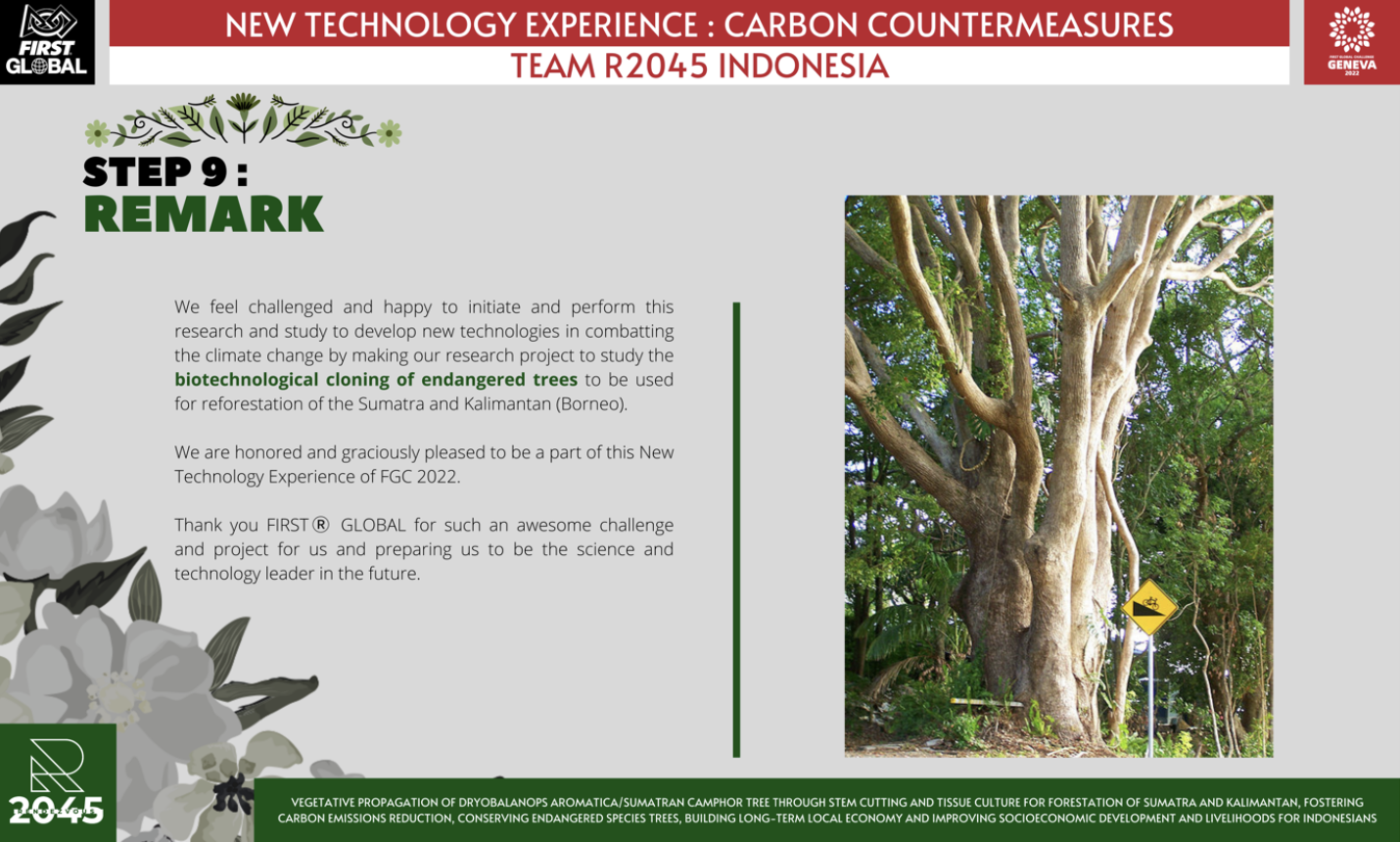
- Log in to post comments
